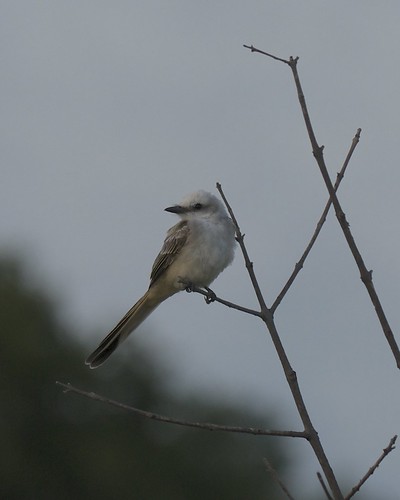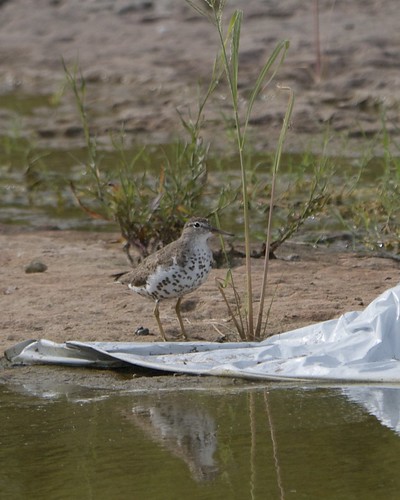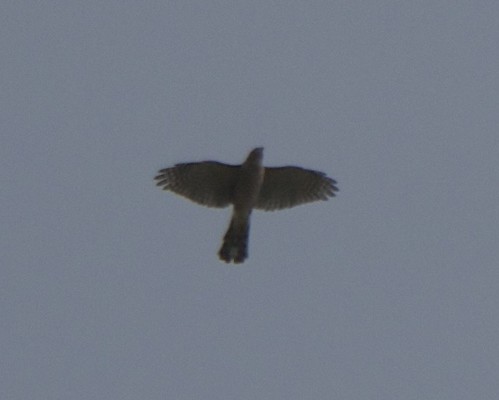About a dozen folks showed up this morning for my monthly group bird walk on Lake Creek Trail. We started at the Parmer Village end at 7:30 and there was enough cloud cover to keep the temperature relatively comfortable until about 9:30. While we waited for people to arrive next to the pond, we saw dozens of dragonflies hunting low over the near edge of the water. These seemed to be mostly Wandering Gliders, a mostly yellow migratory species that is moving south through the area right now. Barn Swallows and Purple Martins are also moving south through the area right now, and there were a few over our heads during the entire walk.
Following the trail upstream, we were treated to some good looks at Scissor-tailed Flycatchers and Western Kingbirds. A couple young scissor-tails perched close to the group several times and seemed to escort us along the trail. Here's one of them.
We also got a brief look at a Crested Caracara -- an increasingly common central Texas bird, but one that's still rare in the neighborhood.
At the last dam on the creek we hung around for awhile.
At least one White-eyed Vireo was almost constantly singing. Looking upstream with the spotting scope we saw several Killdeer, a few Snowy Egrets, Killdeer, briefly a small group of Least Sandpipers, and a single Spotted Sandpiper. The sandpipers and probably most of the killdeer were south-bound migrants. We also enjoyed brief looks at a Red-shouldered Hawk and a Blue-gray Gnatcatcher.
We ended up at the first low water crossing in the Town and Country playing fields. Here we waited aorund awhile too, and we found another Spotted Sandpiper. This is a fun time of year to see Spotted Sandpipers in central Texas, because they still have their spots! They're mostly just here in the winter, and their winter plumage does not have spots. But both of the ones we saw hadn't changed from the breeding plumage yet. Here's a photo of the second one:
A little later we made an exciting observation of a Cooper's Hawk. George Kerr first spotted it in flight, and shortly after the bird flew over the group. As soon as it did, every bird on the ground around us erupted into flight. Cooper's Hawks specialize in hunting other birds, and the other birds know this very well. They can recognize the shape of this hawk instantly. The hawk circled around above us and we watched a flock of 25-30 European Starlings fly above it, following the hawk around. The flock was tightly grouped together, a defensive behavior when a predator is nearby. I've seen this tight flocking of starlings near a hawk before, but I've never seen the flock follow the hawk around. Here's a poor photo of the Cooper's Hawk in flight. The relatively long tail and rounded wings distinguish this as a hawk in the Accipiter family.
On our way back I spotted a dragonfly unfamiliar to me. I photographed it and later got help identifying it as a Broad-striped Forceptail. It's a neotropical species that does not occur much farther north than Austin. Here's my photo.
We ended up tallying 33 species of birds. Here's our complete list. And here are my iNaturalist observations.





No comments:
Post a Comment